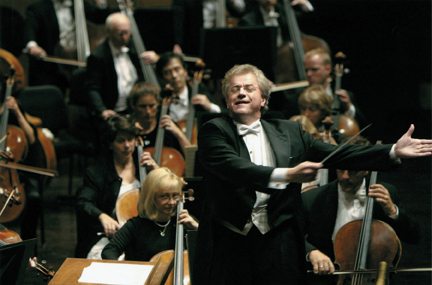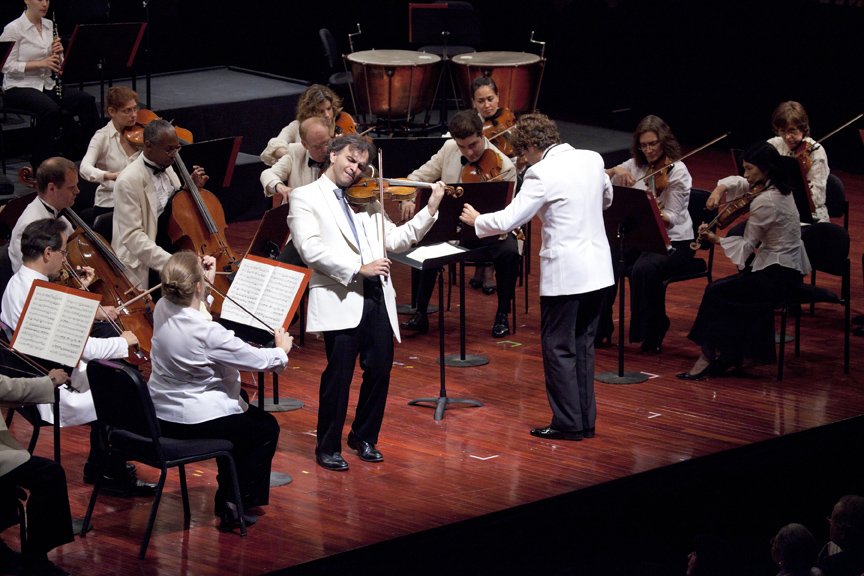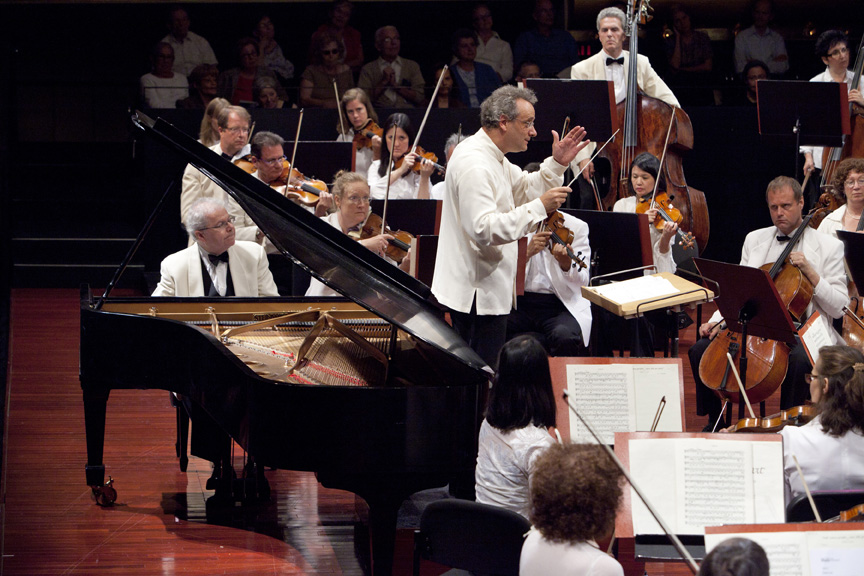This concert was not only all-Mozart, but all dramatic, minor mode Mozart. It featured two guests from Finland: conductor Osmo Vänskä, a familiar presence at the Festival, and the young pianist Antti Siirala in his New York orchestral debut.
The program presented two symphonies rarely performed together: the “little” G minor Symphony, No. 25 K.183, written in 1773, and the “big” G minor Symphony, No. 40 K.550, the second of his three great final symphonies, all written in the summer of 1788. Mozart reserved the key of G minor for some of his most dramatic and most moving works, such as the String Quintet K.516. These two Symphonies share both characteristics, but, composed 15 years apart, are also very different.
The disparities are apparent from the beginning. The first movement of No. 25 is all energy and impetuosity, and while the second theme, in major, is playful and gracious, its return in minor is dark and ominous. The first movement of No. 40 has a pensive resignation, occasionally pierced by a surge of defiance or a ray of hope. The slow movements of both symphonies are in major modes. The early one, based on a single theme, is calm and simple; the later one is contrapuntal and complex; its initial repose is disrupted by wrenching dissonances. The Minuet of No. 25 is a rustic dance, that of No. 40 is weighed down with heavy cross-rhythms; both have genial Trios in G major. The Finales are fast, with avalanches of relentlessly rushing passages.
These symphonies were well suited to Vänskä’s active, emphatic conducting style. Visually, he was in perpetual motion, bowing, twisting and turning, stabbing the air with his baton; musically, it was reflected in dramatic overkill, slashing accents and extreme dynamic contrasts, which made the early Symphony seem anything but little. For the late Symphony, all conductors – and Mozart lovers – have their own interpretation. Väskä took a surging approach to the opening theme, with sea-sickness-inducing swells, not indicated in the score, in every pair of bars. His tempi were generally moderate compared to the hectic speeds often favored today; only the Finale of No. 40 was a headlong rush.
Mozart wrote only two piano concertos in minor keys; the program included the first, K.466, written in 1785, in D minor, another tonality associated with high drama (think of Don Giovanni and the Requiem). The Concerto is characterized by strong contrasts of dynamics, mood, texture, and confrontations rather than interplay between soloist and orchestra. The unusually extensive orchestral exposition begins with mysterious, syncopated murmurings in the low strings, terminated by a thunderous eruption by the full orchestra. The pianist enters, like a lone wanderer, with a new, gentle, pleading theme followed by rippling scale-passages, and continues to go his own way. The slow movement begins as a serene song in major, but the peacefulness is shattered by an outburst of running piano triplets in minor, driven by shrilling woodwinds. Calm is restored at the end, but turbulence runs high in the Finale, until the Coda turns to D major for what might seem a happy ending, but in fact feels like an attempt to ward off deep sadness.
Siirala, winner of many European prizes, is an excellent, admirably self-effacing but communicative pianist. Putting his consummate technique entirely at the service of the music, he played with inward expressiveness, refinement and restraint; though careful not to exaggerate, he rose to the dramatic climaxes, including the long, elaborate, stormy cadenzas by Beethoven (who also wrote cadenzas for Mozart’s other dramatic Piano Concerto in C minor). The orchestra provided strong, empathetic support.




